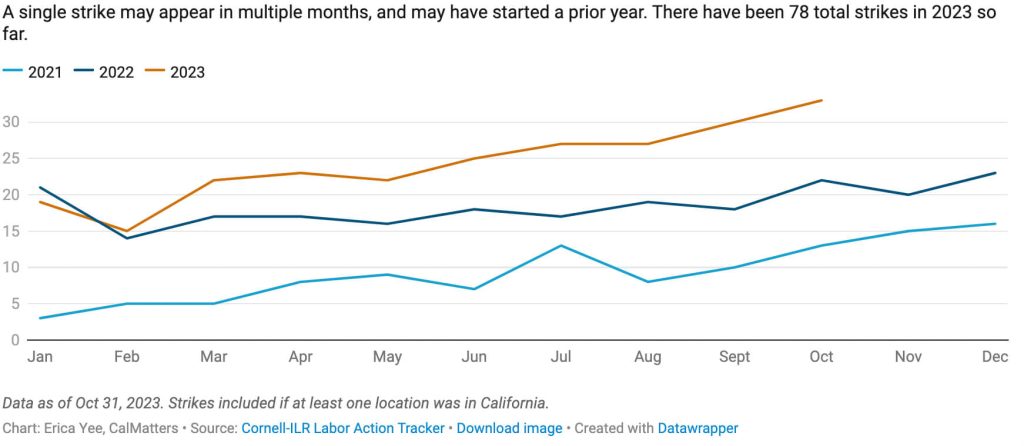California Poverty Rises
As extra pandemic benefits ended, California poverty rose in 2023. Pay increases in 2024 and labor activism could change the equation.
By ALEJANDRA REYES-VELARDE AND JEANNE KUANG
California’s poverty rate remains lower than it was pre-pandemic, but the expiration of COVID expanded safety net programs has led to a continued gradual increase compared to 2022.
According to the California Poverty Measure, which takes into account the state’s high housing costs and various government anti-poverty programs, the state’s poverty rate increased from about 11% in 2021 to 13% in early 2023.
That means about 5 million Californians remain below the poverty line of about $39,900 a year for a family of four, according to the Public Policy Institute of California. The 2019 poverty rate was 16.4%.
Several major social safety net expansions ended in 2023. California, like other states, in the spring began re-evaluating the income eligibility of those enrolled in Medi-Cal, the public health care program for low-income residents, after three years of being barred from kicking anyone off coverage.
And March was the last month the state issued a boost in CalFresh, or food assistance benefits, which had given every recipient additional monthly funds. Food banks across the state reported increases in clients seeking help, and some served record numbers.
Californians continued to feel the impacts of the pandemic, so many workers felt emboldened to walk out of their jobs to demand better wages as the cost of living increased. Hotel workers, fast food workers, actors, writers, hospital workers, graduate student workers, and teachers all contributed to what labor leaders coined the “hot labor summer.”
According to Cornell University’s School of Industrial and Labor Relations tracker, there have been 78 labor actions in California this year as of Oct. 31, not counting those that began in 2022.
The strikes were a catalyst for a late-session legislative proposal to pay workers unemployment benefits during work stoppages. It became one of the most contentious bills of the year. Lawmakers passed it, but Gov. Gavin Newsom vetoed it.

Labor groups did score other victories, including higher minimum wages in two major industries: health care, where all workers will get to $25 an hour over the next five years, and fast food, where the minimum will be $20 an hour starting in April.
In both industries, the Service Employees International Union agreed to truces after bitter fights with employers that included the threat of costly statewide ballot measures. Both truces also mean in the near future, the union likely won’t pursue any additional local minimum wage increases in the two industries, ensuring a degree of stability sought by employers.
Major issues for 2024: Anti-poverty advocates and unions will be watching to see if minimum wage increases passed in 2023 will make a dent in the state’s poverty rate in 2024. At the same time, workers still on strike, including hotel workers and actors, continue to negotiate for fair deals that they hope will allow them to keep up with the rising cost of living. The state plans to launch several guaranteed income pilot programs focused on giving no-strings-attached cash to low-income pregnant people or young people leaving foster care, which will be funded with $30 million approved by lawmakers
For More California News Visit www.zapinin.com/california-news.


